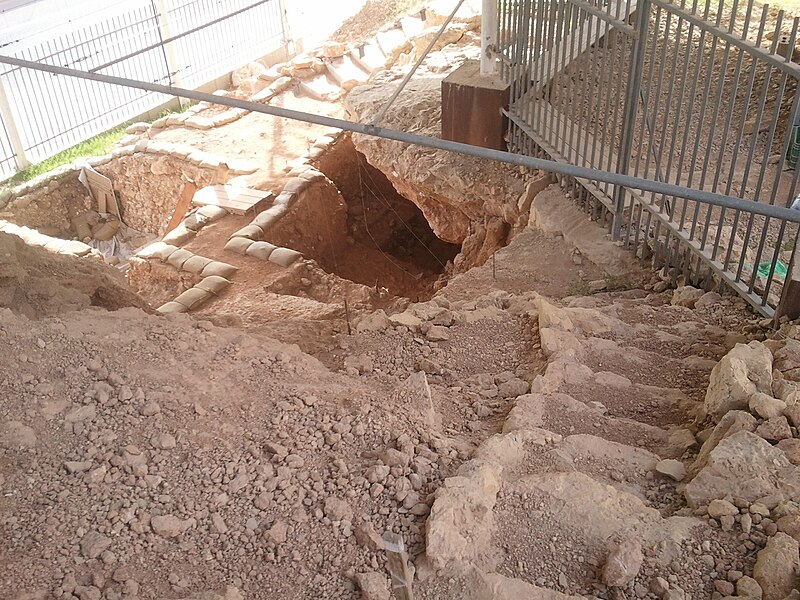The Daily Journalist.
Ancestors of modern humans taught their children how to make flint tools at prehistoric school, researchers say The school was found at the Qesem Cave, a Lower Paleolithic archaeological site 12 km east of Tel Aviv in Israel. Early humans were occupying the site by 382,000 years ago until. 200,000 years ago.
Tel Aviv University archaeologists have uncovered what they believe was a prehistoric school, where ancestors of modern humans taught their children manufacture flint instruments and dismember animals some 400,000 years ago, according to a report in The Times of London.
The hominini, ancestors of today’s homo sapiens, had a brain size similar to today’s humans and, according to the findings in the Kessem Cave in central Israel, had developed relatively advanced manufacturing techniques.
Kessem Cave

Credit: Wikimedia Commons
The dig, led by Prof. Avi Gopher and Prof. Ran Barkai of TAU’s Department of Archaeology and Ancient Near Eastern Cultures, has been dubbed “the oldest school in the world,” because it suggested hominini had used the space to impart flint skills to their children, the oldest such documented find.
Thousands of flint instruments were found in the cave, including hand-axes, blades and scrapers. Relatively advanced tools were found, but there were also many half-made, faulty or flints of inferior material, that would not have been used to make regular tools. Their presence in specific parts of the cave, especially around a large fireplace, indicated that experienced flint-masons were among the hominini in the cave, imparting their expertise to the younger members of the tribe.
Qesem Cave was occupied from about 420-220 ka, although there is some uncertainty regarding the end date. All archaeological finds at Qesem Cave have been assigned to the Acheulo-Yabrudian Cultural Complex (AYCC) of the late Lower Paleolithic
Qesem Cave stone tools are made of flint. They are mainly blades end scrapers, burins, and naturally backed knives. There are also flakes and hammerstones. Some of the horizons contain many blades and related blade-tools but they are absent in others. However thick side-scrapers are found throughout them. Acheulian type hand-axes are found at the top and at the bottom of the archeological sequence. All stages of stone tool manufacture have been found
Among the many hominini teeth found in the cave were children’s baby teeth.
The Qesem Cave contains one of the earliest examples of regular use of fire in the Middle Pleistocene. Large quantities of burnt bone, defined by a combination of microscopic and macroscopic criteria, and moderately heated soil lumps suggest butchering and prey-defleshing occurred near fireplaces.


